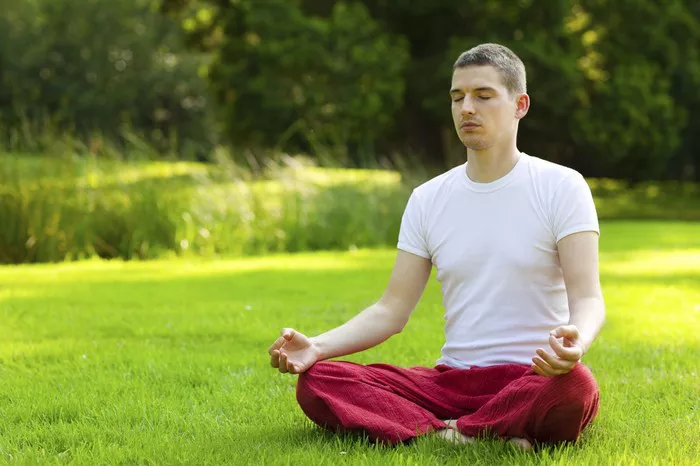Kriya Yoga is a powerful and transformative spiritual practice that has been passed down through generations of enlightened masters. If you’re new to Kriya Yoga and seeking a deeper connection with yourself and the universe, this guide will help you understand what Kriya Yoga is, its benefits, and how to begin your journey into this ancient discipline.
In this article, we’ll explore the origins of Kriya Yoga, its key principles, the various techniques, and practical steps you can take to get initiated into this discipline. Whether you are a complete beginner or someone with some prior experience in yoga, this guide aims to provide you with the tools and understanding necessary to begin your spiritual journey.
What is Kriya Yoga?
Kriya Yoga is an ancient system of yoga that focuses on the development of self-realization and spiritual awakening through specific techniques designed to accelerate the process of inner transformation. The word “Kriya” in Sanskrit means “action” or “process,” while “Yoga” means “union” or “connection.” Thus, Kriya Yoga is the practice of consciously directed actions that lead to a union with the divine or a deeper awareness of the true self.
At its core, Kriya Yoga is a method of working with the breath and energy to facilitate spiritual growth. It teaches practitioners to regulate the life force energy, known as “prana,” within the body through a series of breathing techniques, meditation practices, and self-discipline. Kriya Yoga aims to purify the body, mind, and spirit, ultimately leading to a state of higher consciousness.
The practice of Kriya Yoga is rooted in the teachings of ancient yogis, with notable contributions from the Indian yogi, Paramahansa Yogananda, who brought Kriya Yoga to the West in the early 20th century. His book, Autobiography of a Yogi, introduced millions to the power of Kriya Yoga, inspiring a global movement of spiritual seekers.
The Principles of Kriya Yoga
To fully understand Kriya Yoga, it’s important to familiarize yourself with its core principles. These principles form the foundation of the practice and are meant to guide the practitioner toward spiritual enlightenment.
Self-Realization: The ultimate goal of Kriya Yoga is to realize your true nature as a divine being. This realization occurs when you transcend the physical body and mind and experience a direct connection with the infinite consciousness.
Pranayama (Breathing Techniques): The regulation of breath is a key component of Kriya Yoga. Pranayama techniques are designed to control and direct the flow of prana (life force energy) within the body. These techniques help calm the mind, purify the nervous system, and expand spiritual awareness.
Meditation: Kriya Yoga places great emphasis on meditation as a tool for inner transformation. Meditation helps you go beyond the mental chatter and distractions of daily life, allowing you to experience a deep state of peace, stillness, and connection with the divine.
Mind Control: In Kriya Yoga, controlling the mind is seen as an essential aspect of spiritual practice. This involves cultivating awareness of your thoughts, emotions, and actions and learning to focus the mind on the present moment. By mastering the mind, you can achieve a greater sense of inner calm and spiritual clarity.
Detachment: Kriya Yoga teaches the importance of detachment from the material world and the ego. This does not mean renouncing all worldly possessions or responsibilities, but rather developing a sense of non-attachment to the outcomes of actions. Detachment helps you focus on your inner spiritual journey without getting caught up in external distractions.
Service to Others: Compassion and selfless service (Seva) are essential aspects of Kriya Yoga. By helping others, you transcend the ego and develop a deeper sense of connection to all beings.
The Benefits of Kriya Yoga
The practice of Kriya Yoga offers a wide range of benefits for both the body and the mind. Some of the key benefits include:
Increased Physical Vitality: Kriya Yoga techniques promote physical health by balancing the flow of prana within the body. This can lead to increased energy, vitality, and overall well-being.
Mental Clarity and Focus: Through the practice of meditation and breath control, Kriya Yoga helps calm the mind, reduce stress, and increase mental clarity. It improves concentration and focus, enabling you to perform tasks more efficiently.
Spiritual Growth: Kriya Yoga accelerates spiritual development by helping you connect with your true self. It fosters a deep sense of inner peace, joy, and love. As you progress in your practice, you may experience heightened states of consciousness and a profound sense of oneness with the universe.
Emotional Healing: Kriya Yoga practices can help release emotional blockages, traumas, and negative thought patterns. This leads to emotional healing, greater resilience, and the ability to experience life from a place of equanimity and love.
Stress Reduction: The combination of pranayama (breathing techniques) and meditation in Kriya Yoga helps reduce the levels of stress and anxiety in the body. It activates the parasympathetic nervous system, promoting relaxation and a sense of calm.
How to Get Initiated into Kriya Yoga
Now that you have an understanding of what Kriya Yoga is and its benefits, you may be wondering how to get started with this practice. Here is a step-by-step guide on how to initiate yourself into Kriya Yoga:
1. Learn from a Qualified Teacher
The first and most important step in getting initiated into Kriya Yoga is to find a qualified teacher or guru. Kriya Yoga is not a self-taught practice, and its techniques must be learned under the guidance of an experienced teacher. A guru or teacher can impart the correct techniques, provide spiritual support, and guide you on your journey toward self-realization.
There are many organizations and spiritual centers worldwide that offer Kriya Yoga teachings, most notably the Self-Realization Fellowship (SRF), founded by Paramahansa Yogananda. The SRF offers online courses, meditation groups, and retreats that provide instruction on Kriya Yoga practices. Other organizations, such as the Kriya Yoga Institute or The Ananda Sangha, also offer teachings in Kriya Yoga.
2. Commit to Regular Practice
Kriya Yoga is a discipline that requires dedication and consistency. To receive the full benefits of this practice, you must commit to daily practice. Initially, the techniques may feel challenging, but over time, you will develop greater ease and proficiency. Begin with a short daily practice, and gradually increase the duration as you become more comfortable.
The key techniques of Kriya Yoga include Pranayama, Kriya Pranayama (specific techniques for energizing the body and calming the mind), and Meditation. Most practitioners begin by learning these techniques under the guidance of a teacher in a structured course or workshop.
3. Study the Philosophy of Kriya Yoga
While Kriya Yoga is deeply rooted in spiritual practice, it is also based on a philosophical system that encompasses teachings on self-realization, meditation, and the nature of the soul. To deepen your understanding, it’s important to study the philosophy behind Kriya Yoga.
You can read books, watch lectures, and participate in classes that explain the philosophy of Kriya Yoga. One of the most accessible resources is Paramahansa Yogananda’s Autobiography of a Yogi, which is considered a spiritual classic. This book provides insight into the principles and practices of Kriya Yoga and offers practical advice on how to live a spiritually awakened life.
4. Practice Mindfulness and Self-Awareness
Kriya Yoga is about more than just specific techniques; it’s also about cultivating mindfulness and self-awareness in every moment. As you practice the physical postures, pranayama techniques, and meditation, bring your awareness to the present moment. Practice mindfulness throughout your daily life by being conscious of your thoughts, emotions, and actions.
Self-awareness helps you recognize distractions and attachments that prevent you from experiencing spiritual growth. Over time, this will allow you to transcend negative thought patterns and cultivate a deep sense of inner peace.
5. Attend Retreats and Workshops
As you progress in your practice, attending Kriya Yoga retreats and workshops can be extremely beneficial. These immersive experiences provide an opportunity to deepen your practice, connect with like-minded individuals, and receive guidance from experienced teachers.
Retreats are a powerful way to temporarily withdraw from the distractions of daily life and focus exclusively on your spiritual growth. Many spiritual centers offer weekend or week-long Kriya Yoga retreats that provide intensive training in meditation, pranayama, and other Kriya Yoga techniques.
6. Cultivate Patience and Perseverance
Spiritual growth takes time, and Kriya Yoga is no exception. It is important to remain patient and consistent in your practice, even if you don’t immediately experience dramatic changes. As you continue to practice, you will begin to notice subtle shifts in your energy, awareness, and understanding of yourself.
Kriya Yoga is a lifelong journey, and the benefits deepen over time. Trust the process and allow your practice to evolve naturally.
Conclusion
Getting initiated into Kriya Yoga is a profound and transformative journey that can help you discover your true nature and experience deeper states of peace and joy. By finding a qualified teacher, committing to daily practice, and embracing the philosophy of self-realization, you can begin your journey toward spiritual awakening.
Remember, Kriya Yoga is not just about learning techniques; it is about cultivating a deeper connection to the divine within and recognizing the interconnectedness of all beings. As you practice regularly and develop greater mindfulness and self-awareness, you will experience the many spiritual, mental, and physical benefits of Kriya Yoga.
May your journey in Kriya Yoga bring you peace, enlightenment, and a deeper connection to your true self.
Related Topics:























